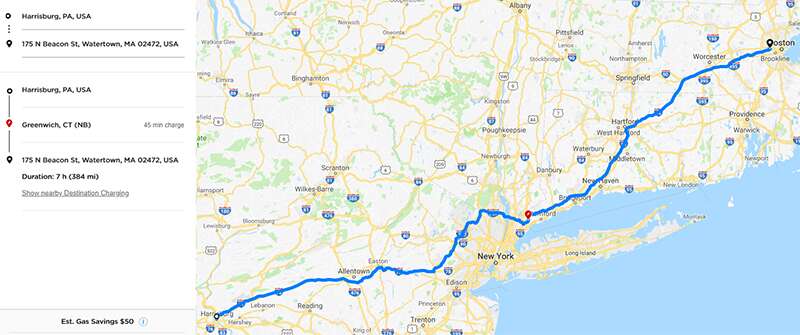Tesla’s Supercharging network is one of the most mature electric car charging infrastructures in the world, though other vendor’s future technology may risk the viability of current generation Tesla hardware. One thing in particular that Musk & Co. happened to do extremely well was establish a branded charging network that its cars could call home, and most even do it at no additional cost beyond the purchase price of the car. Recently, the automaker tweeted a surprising fact about the accessibility of its charging network: 99 percent of the U.S. population lives within 150 miles of a Tesla Supercharger.
While charging an electric car at home home is the ideal scenario (and part of Tesla’s sustainable energy goal), you can’t always account for each and every charge. If you go on a road trip that exceeds the range of your car, you won’t be able to cover that without a supplemented energy source; that’s where the Supercharging network comes into play. Tesla deploys a number of both Level 2 destination and Level 3 fast chargers around the U.S., all of which are available for customers to charge their Teslas at-will. Best of all, some customers who have purchase a qualifying Model 3, Model S, or Model X have access to this charging network at no additional cost.
But just how will your navigation know where to take you? Other than the functionality being baked-in to Tesla’s navigation system, anyone can actually pre-plan a route on Tesla’s website using its Trips tool.
For example: over the weekend, my family and I packed up my wife’s Toyota Venza and hightailed it from Pennsylvania to Boston. Over the 760 mile round-trip, we spent about $120 in gas. According to Tesla, if we owned a vehicle with free unlimited supercharging, we would have saved around $100 (or a bit more, according to our real-world number) thanks to the charging network. But if we were using the pay-per-use Supercharging model, we would have saved about $18. Though the number itself may seem insignificant to the overall cost of fuel, it still represents a cost savings of around 15 percent.
While 15 percent isn’t much to gawk about, especially given the cost increase of a Tesla when compared to the other premium sedans and SUVs, the unlimited supercharging does add up to be a much higher cost savings for heavy-mileage drivers much more quickly. But are you willing to give up your time for the cost savings? Given that our eight-year-old was on board during the trip, I pondered if the extra hour of travel would be worth the few dollars in savings if my child couldn’t tolerate long car rides; but everyone’s situation is different, and many, myself included, would likely spring for it.
As the Supercharger network continues to mature, Tesla addresses not only the problem of inevitable charger congestion, but also works to make charging more accessible to more people regardless of location. As charger density increases across the U.S., trips can be planned out with more granularity and less sidetracks will need to be taken just to give your car a bit more juice.
Source: Read Full Article

